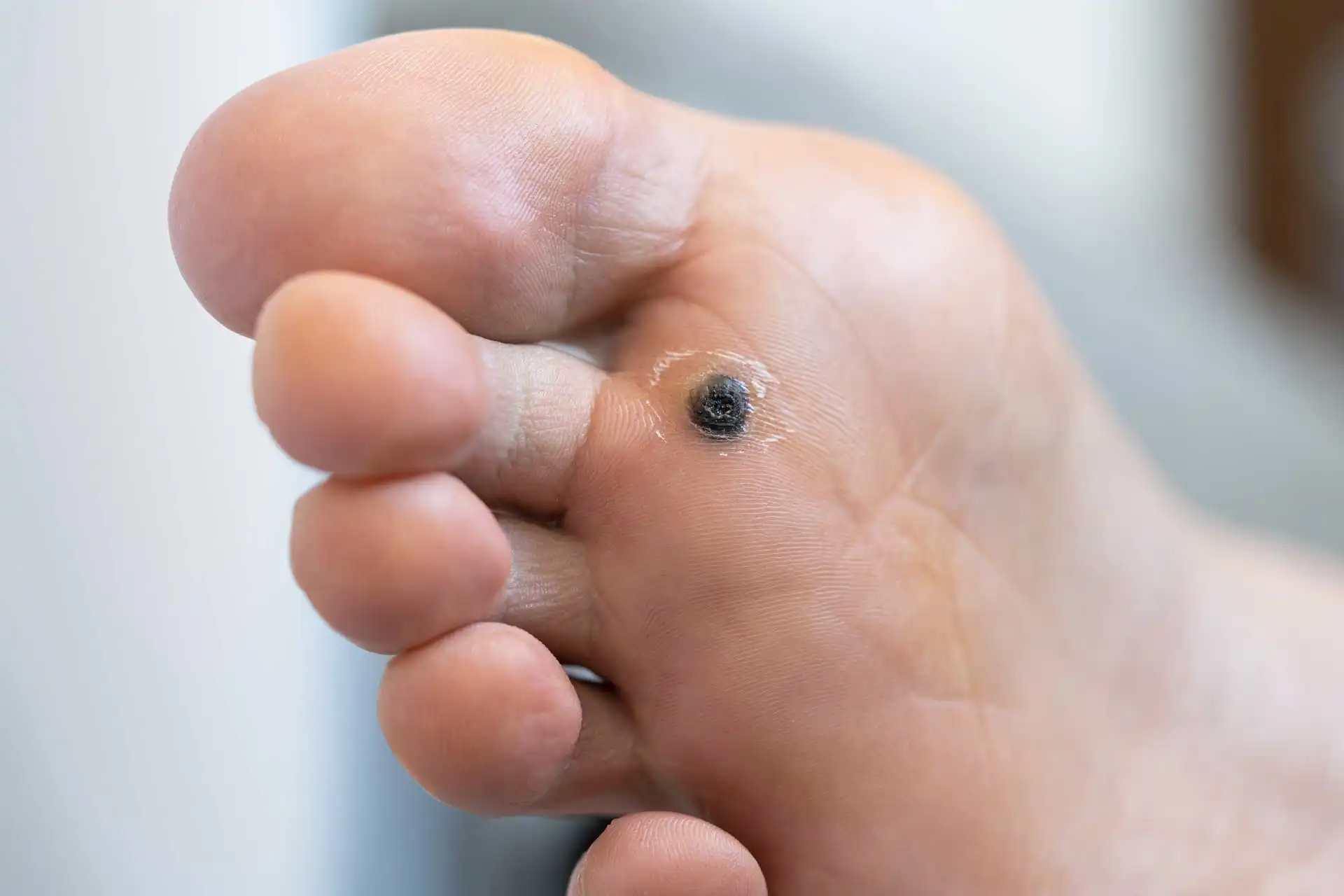
CONDITIONS
Verrucae are plantar warts that commonly occur on the soles of the feet or around the toe area. They are caused by the Human Papilloma Virus (HPV), which is contagious through direct person-to-person contact. There are various forms of HPV, which all relate to various parts of the human body.
Verrucae are harmless but can be uncomfortable and painful if they develop on a weight bearing part of the foot. In addition, hard skin (callus) can form over the top of the verruca, increasing the discomfort in this area. There are also some strains of the virus that spread very quickly and can look unsightly.
In the first instance, avoid touching or scratching a verruca as it may spread into a cluster of warts. Instead, cover it up with a plaster. Evidence suggests that, in many cases, verrucae will disappear of their own accord, within six months for children but taking longer for adults (up to two years). This is because the body’s immune system recognises the presence of the virus and fights the infection naturally but it can take many months for this to happen. If it is painless, no treatment may be required as some treatments can be painful, especially for children, and can cause side-effects.
For painful and/or unsightly verrucae or ones that are spreading, you can self-treat using ointments and gels from your local pharmacist following the instructions carefully. Sometimes, merely rubbing away the dry skin over a verruca and applying a plaster helps to stimulate the body’s immune system to fight the infection. However, if your verruca becomes unusually painful or the surrounding skin area goes red, stop treatment immediately and see a podiatrist. This is because if the healthy tissue around a verruca is damaged, you could hamper further treatment.
A podiatrist will assess your general well-being and foot health before deciding on a treatment plan. This may include:
To avoid catching verrucae, keep your feet in a healthy condition. Always dry them thoroughly after washing and if your feet are sweaty, treat them with surgical spirit; if they are dry, moisturise them with suitable creams or lotions, but avoid applying between the toes.
Other tips include wearing flip-flops in communal areas, not sharing towels, shoes and socks, and treating conditions such as Athlete’s Foot with a specialist treatment from the pharmacist.
If you do have a verruca and want to go swimming, wear special verrucae socks to avoid passing on the virus. These can also be worn as a preventative measure.
TESTIMONIALS
Trustindex verifies that the original source of the review is Google. I went to vine podiatry on 14th January 2025 and from the moment I went through the door I was put at ease. I have type 2 diabetes and Adam had the most up to date equipment and was very knowledgable, I would definitely recommend him.Load more